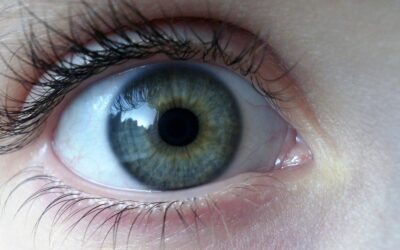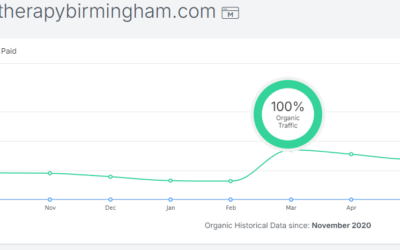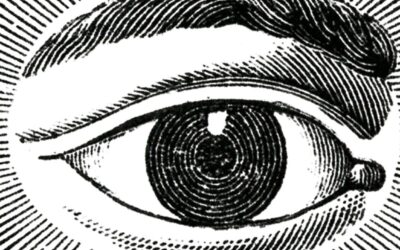The Roots of Emotion

At the core of our emotional landscape lies a powerful and often misunderstood force: shame. As a fundamental human emotion, shame has deep evolutionary roots and profound impacts on our mental and physical well-being. By exploring the neurobiological processes underlying shame and its potential for transformation, we can gain valuable insights into the inner workings of our psyche and unlock pathways to emotional healing.
The Neurobiology of Shame
Recent studies have shed light on the neurological and biological processes that occur when we experience shame. Using advanced imaging techniques like quantitative electroencephalography (QEEG), researchers have mapped the brain’s activity during moments of intense shame.
When shame is triggered, the brain’s threat detection system, centered in the amygdala, becomes highly activated. This heightened amygdala response initiates a cascade of physiological changes, including increased cortisol levels, elevated heart rate, and reduced activity in the prefrontal cortex—the region responsible for rational thinking and emotional regulation.
The Evolutionary Purpose of Shame
From an evolutionary perspective, shame serves a vital role in maintaining social cohesion and promoting adherence to group norms. In our ancestral past, being ostracized from the community could mean death, as survival often depended on collective efforts. Shame, therefore, evolved as a powerful motivator to avoid behaviors that might lead to social exclusion.
However, in modern contexts, shame can become maladaptive, leading to chronic stress, self-criticism, and a host of mental health issues. When shame is internalized and left unaddressed, it can erode our sense of self-worth and hinder our ability to form healthy relationships.
The Transformative Power of Acceptance One of the keys to transforming shame lies in the practice of acceptance. By acknowledging and embracing our shame without judgment, we create space for healing and growth. Acceptance allows us to view shame as a natural part of the human experience rather than a personal failing or defect.
Through mindfulness and self-compassion, we can learn to sit with our shame, observing it with curiosity and kindness. This process of acceptance activates the brain’s self-soothing system, releasing oxytocin and promoting feelings of safety and connection.
The Emotional Alchemy of Shame
Beyond acceptance, we can alchemize shame into other, more constructive emotions. In the framework of emotional transformation therapy, shame is often associated with the color red—a hue linked to vitality, courage, and groundedness.
By connecting with the energy of red, we can transmute shame into empowerment and resilience. This transformation involves recognizing the lessons that shame has to teach us—about our values, boundaries, and authentic self-expression—and integrating those lessons into our lives.
The Rainbow of Emotions
Shame is just one of many emotions that shape our experience. Each emotion carries its own energy, purpose, and potential for transformation. Here are 10 additional emotions and their alchemical properties:
Shame
Somatic Associations: Heaviness in the chest, hunched posture, averted gaze, flushed face
Evolutionary Purpose: Shame evolved as a mechanism to maintain social cohesion and promote adherence to group norms, helping individuals avoid behaviors that could lead to ostracism.
Transformation: Shame can be transformed into empowerment and resilience through acceptance, self-compassion, and recognizing the lessons it has to teach us about our values and boundaries.
Grief
Somatic Associations: Tightness in the throat, chest pain, fatigue, shallow breathing
Anthropological Roots: Grief is a universal human experience that helps individuals process loss, honor the memory of loved ones, and ultimately adapt to a new reality.
Transformation: Grief can be transformed into gratitude and appreciation for what we have lost, allowing us to carry forward the love and lessons from those experiences.
Sadness
Somatic Associations: Aching in the heart, heaviness in the limbs, slowed movements, tearfulness
Evolutionary Purpose: Sadness serves as a signal to others that an individual needs support, promoting empathy and strengthening social bonds within a community.
Transformation: Sadness can be transmuted into deeper compassion for ourselves and others, fostering understanding and connection in times of distress.
Fear
Somatic Associations: Racing heartbeat, tightness in the stomach, trembling, hypervigilance
Evolutionary Purpose: Fear is a survival mechanism that helps individuals identify and respond to threats, promoting safety and adaptive behaviors.
Transformation: Fear can be alchemized into courage and the willingness to face challenges by reframing it as an opportunity for growth and learning.
Anger
Somatic Associations: Tension in the jaw and fists, increased body temperature, rapid breathing
Anthropological Roots: Anger serves as a powerful catalyst for change, signaling when an individual’s boundaries have been violated and mobilizing them to take action.
Transformation: Anger can be transformed into assertiveness and the ability to set healthy boundaries, allowing individuals to advocate for their needs and values.
Jealousy
Somatic Associations: Churning in the stomach, clenched teeth, narrowed eyes
Evolutionary Purpose: Jealousy evolved as a means to protect valuable resources and relationships, motivating individuals to safeguard what they perceive as essential to their survival and well-being.
Transformation: Jealousy can be transmuted into appreciation for what we have and inspiration to grow, shifting focus from lack to abundance and personal development.
Guilt
Somatic Associations: Sensation of a knot in the stomach, pressure in the head, restlessness
Anthropological Roots: Guilt functions as an internal moral compass, helping individuals maintain ethical behavior and repair relationships when they have transgressed.
Transformation: Guilt can be transformed into the motivation to make amends and live with integrity, promoting accountability and personal growth.
Loneliness
Somatic Associations: Emptiness in the chest, a sense of disconnection, lethargy
Evolutionary Purpose: Loneliness serves as a signal that an individual needs to seek out social connection, as strong social bonds were essential for survival in our ancestral environments.
Transformation: Loneliness can be alchemized into a deeper connection with ourselves and others, promoting self-reflection, empathy, and the cultivation of meaningful relationships.
Anxiety
Somatic Associations: Tightness in the chest, rapid heartbeat, restlessness, muscle tension
Anthropological Roots: Anxiety functions as a warning system, helping individuals anticipate and prepare for potential threats to their well-being.
Transformation: Anxiety can be transmuted into present-moment awareness and trust in our resilience, allowing us to navigate uncertainty with grounding and self-efficacy.
Despair
Somatic Associations: Heaviness in the body, a sense of sinking or pulling downward, numbness
Evolutionary Purpose: Despair can be seen as a crisis response that forces individuals to confront and adapt to seemingly insurmountable challenges, ultimately promoting resilience and growth.
Transformation: Despair can be transformed into hope and the recognition of new possibilities by shifting perspective, finding meaning in adversity, and drawing on inner and outer resources for support.
In each case, the key to emotional transformation lies in accepting the emotion, understanding its purpose, and consciously redirecting its energy towards growth and healing.
The Alchemy of the Human Heart As we navigate the complex tapestry of our emotions, it’s essential to remember that each thread—even the darkest ones—has a role to play in the larger design. By embracing the full spectrum of our emotional experience, we can tap into the alchemical power of the human heart and transform our shadows into sources of strength, wisdom, and connection.
In this journey of emotional transformation, we are all alchemists, learning to transmute the lead of our pain into the gold of our highest potential. May we approach this sacred work with compassion, courage, and an open heart, knowing that within each emotion lies a hidden gift waiting to be uncovered.
Digital, Media, and Cultural Theorists and Philosophers
Bernays and The Psychology of Advertising
Claude Shannon and Warren Weaver























0 Comments